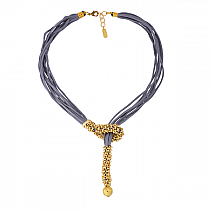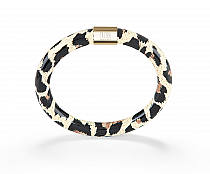-
Inspiracje
- Najnowsze
- Najpopularniejsze
- Zaskocz mnie
- Obserwowane
- MAGazyn
- Moda damska
- DIY - zrób to sam
- Kuchnia
- Uroda
- Wnętrza
- Humor
- Ogród
- Ślub
- Architektura
- Biżuteria
- Design
- Dziecko
- Film
- Fotografia
- Gadżety
- Historia
- Hobby
- Inne
- Książka
- Moda męska
- Muzyka
- Nauka i natura
- Plakaty i obrazy
- Podróże i miejsca
- Samochody i motocykle
- Sport i fitness
- Święta i uroczystości
- Tatuaż
- Zwierzęta
- Partnerzy
- KONKURS
-
Zakupy
-
ONA
- Ubrania
- Bielizna
- Bluzki
- Bluzy
- Dresy damskie
- Kombinezony
- Koszule
- Koszulki
- Kurtki
- Płaszcze
- Spodnie i leginsy
- Spodnie jeans
- Spódnice
- Stroje kąpielowe
- Sukienki i tuniki
- Swetry
- Szorty
- Zestawy
- Żakiety i kamizelki
- Buty
- Baleriny
- Botki
- Czółenka
- Espadryle
- Glany
- Japonki
- Kalosze
- Klapki
- Koturny
- Kowbojki
- Kozaki
- Obuwie Domowe
- Półbuty
- Sandały
- Sportowe i lifestyle
- Szpilki
- Tenisówki i Trampki
- Trapery i trekkingi
- Dodatki
- Bransoletki i zawieszki
- Breloki
- Czapki i kapelusze
- Etui
- Kolczyki, nausznice
- Kołnierzyki
- Kosmetyczki
- Naszyjniki, kolie i zawieszki
- Okulary
- Ozdoby do włosów
- Parasole
- Paski
- Pierścionki
- Plecaki
- Portfele
- Rękawiczki
- Skarpety
- Szaliki i chusty
- Torby i torebki
- Walizki
- Zegarki
- Zestawy biżuterii
- Zdrowie i uroda
- Akcesoria kosmetyczne
- Balsamy
- Bazy i podkłady
- Cienie do oczu
- Dezodoranty
- Higiena jamy ustnej
- Korektory
- Kredki
- Kremy i serum
- Lakiery
- Manicure i pedicure
- Maseczki
- Odżywki
- Peeling
- Perfumy i wody perfumowane
- Pielęgnacja po opalaniu
- Płyny żele i mydła
- Pomadki i błyszczyki
- Pudry
- Róże
- Stylizacja włosów
- Szampony
- Toniki i demakijaż
- Tusze
- Wody toaletowe
- Zestawy
-
ON
- Ubrania
- Bielizna
- Bluzy
- Kąpielówki
- Koszule
- Kurtki i płaszcze
- Marynarki kamizeki
- Spodenki i szorty
- Spodnie
- Swetry
- T-shirt długi rękaw
- T-shirt i Polo
- KULTURA
- GADŻETY
- DZIECKO
-
DOM I WNĘTRZE
- Wnętrza
- Akcesoria dom
- Do baru
- Do biura
- Do kuchni
- Kubki kufle i kieliszki
- Lustra
- Nakrycia stołu
- Oświetlenie
- Plakaty i tablice
- Pościele, poduszki i nakrycia
- Przechowywanie
- Tekstylia
- Zegary i budziki
-
Marki
- MARKI
- Adidas
- Adriatica
- Alter Core
- Armani
- Asics
- Atlantic
- Azzaro
- Barbie
- Bburago
- Be-U
- Benetton
- Bering
- Black Plum
- Burberry
- Bvlgari
- Cacharel
- Calvin Klein
- Canon
- Carolina Herrera
- Carrera
- Casio
- Celestron
- Chanel
- Chloe
- Clinique
- Cobi
- Coloud
- Converse
- David Beckham
- Davidoff
- Delbana
- Diesel
- Dior
- DISNEY
- DKNY
- Dolce & Gabbana
- DOXA
- Dr. Martens
- Dunhill
- Ecco
- Elizabeth Arden
- Esprit
- EVC DSGN
- Festina
- Fila
- Fisher Price
- Frederique Constant
- Givenchy
- Gucci
- Guerlain
- Guess
- Hasbro
- Helena Rubinstein
- Hermes
- Hi-Tec
- Hugo Boss
- Hunter
- Iceberg
- Ingersoll
- Issey Miyake
- Jean Paul Gaultier
- Jennifer Lopez
- Jil Sander
- Jimmy Choo
- Joop!
- Juicy Couture
- Kappa
- Kenzo
- Komono
- Lacoste
- Lalique
- Lancome
- Lanvin
- Lee
- Lego
- Lorus
- Marc Jacobs
- Marshall
- Masaki Matsushima
- Matchbox
- Mattel
- Max Factor
- Max&Co
- Mc Arthur
- Mizuno
- Mont Blanc
- Moschino
- Mr. Gugu & Miss Go
- My Little Pony
- New Balance
- Nike
- Nikon
- Nina Ricci
- Ninety Eight Clothing
- Nivea
- Nixon
- Nooka
- Obaku
- Onitsuka Tiger
- Paco Rabanne
- Pentax
- Pewex
- Pierre Cardin
- Playboy
- Prada
- Puma
- Ralph Lauren
- Reebok
- Regatta
- Revlon
- Rexona
- Rider
- Salomon
- Salvatore Ferragamo
- Shelyak
- Shiseido
- Skagen
- Swarovski
- Takahashi
- Thierry Mugler
- Timberland
- Timex
- Tommy Hilfiger
- UGC
- Urbanears
- Valentino
- Vans
- Versace
- Viktor & Rolf
- Vixen
- Welly
- William Optics
- Wrangler
- Yimaida
- Yukon
- Yves Saint Laurent
-
ONA
-
Szukaj
- Losuj
Biżuteria
PowerSorb
https://www.uvabsorber.com/products/free-radical-photoinitiators-type-i/
Free radical photoinitiators react differently when exposed to UV light. Depending on their reactivity, they are classified as Norrish photoinitiator type 1 and 2.
Norish type i photoinitiator are typically compounds containing a benzoyl group which, when exposed to UV light, cleaves to produce two highly reactive free radicals, at least one of which reacts with the monomer to initiate polymerization. Type I photoinitiators are irreversibly incorporated into the polymer matrix.
Norrish Type II photoinitiators require hydrogen donors to react when exposed to UV light, and the most common of these hydrogen donors are amines (amine synergists). Upon UV irradiation, the Type II photoinitiator abstracts a hydrogen atom from the synergist used to form two very reactive alkylamino radicals, which subsequently initiate polymerization. Type II photoinitiators are generally not incorporated during the reaction, but synergists are incorporated.
TINTOLL is one of the photoinitiator manufacturers, which is also one of the cornerstone businesses of TINTOLL. Our product portfolio covers free radical and cationic photoinitiators (photo-acid generators) including photoinitiator type 1 and 2, as well as amine synergists. UV-curable materials are widely used in graphic arts, industrial coatings, adhesives, printed circuit boards, and 3D printing. TINTOLL provides application support, product development and custom solutions, and collaborates with customers to develop next-generation photoinitiators.
Types of Free Radical Photoinitiators - Type I
PowerCure™ 1173
CAS No. 7473-98-5
2-hydroxy-2-methyl-1-phenylpropanone.
PowerCure™ 184
CAS No. 947-19-3
1-Hydroxy-cyclohexyl-phenyl-ketone.
PowerCure™ 127
CAS No. 474510-57-1
2-hydroxy-1-(4-(4-(2-hydroxy-2-methylpropionyl)benzyl)phenyl)- 2-methylpropan-1-one.
PowerCure™ 2959
CAS No. 106797-53-9
1-[4-(2-hydroxyethoxyl)-phenyl]-2-hydroxy-methylpropanone.
PowerCure™ 369
CAS No. 119313-12-1
2-benzyl-2-(dimethylamino)-4’-morpholinobutyrophenone.
PowerCure™ 379
CAS No. 119344-86-4
2-dimethylamino-2-(4-methyl-benzyl)-1-(4-morpholin-4-yl-phenyl)-butan-1-one.
PowerCure™ 907
CAS No. 71868-10-5
2-Methyl-1-[4-(methylthio)phenyl]-2- (4-morpholinyl)-1-propanone.
PowerCure™ 651
CAS No. 24650-42-8
2,2-dimethoxy-2-phenylacetophenone.
PowerCure™ TPO
CAS No. 75980-60-8
2,4,6-trimethylbenzoyl-diphenyl phosphine oxide.
PowerCure™ TPO-L
CAS No. 84434-11-7
Ethyl(2,4,6-trimethylbenzoyl)-phenyl phosphinate.
PowerCure™ 819
CAS No. 162881-26-7
Bis(2,4,6-trimethylbenzoyl)phenylphosphine oxide.
PowerCure™ ONE
CAS No. 163702-01-0
Difunctional alpha-hydroxy ketone photoinitiator.
PowerCure™ 150
CAS No. 163702-01-0
Oligomeric alpha hydroxy ketone 100%.
PowerCure™ 151
CAS No. 163702-01-0 + 7473-98-5
Oligomeric alpha hydroxy ketone (70% wt) and 2-hydroxy-2-methylpropiophenone (30% wt).
PowerCure™ 152
CAS No. 163702-01-0 + 42978-66-5
Oligomeric alpha hydroxy ketone (75% wt) and tripropylene glycol diacrylate (25% wt).
PowerCure™ BCIM
CAS No. 7189-82-4
2,2'-Bis(2-chlorophenyl)-4,4',5,5'-tetraphenyl-1,2'-biimidazole.
PowerCure™ DEAP
CAS No. 6175-45-7
2,2-Diethoxy-1-phenylethanone.
PowerCure™ 1314
CAS No. 253585-83-0
1-[4-(Phenylthio)phenyl]-1,2-octanedione 2-(O-benzoyloxime).
PowerCure™ 160
CAS No. 71868-15-0
Difunctional alpha hydroxy ketone type I photoinitiator 2-Hydroxy-1-[4-[4-(2-hydroxy-2-methylpropionyl)phenoxy]phenyl]-2-methylpropanone.
PowerCure™ 1000
CAS No. 947-19-3 + 7473-98-5
20% PowerCure 184 and 80% PowerCure 1173.
PowerCure™ 4265
CAS No. 75980-60-8 + 7473-98-5
50% PowerCure TPO and 50% PowerCure 1173.
PowerCure™ 2022
CAS No. 7473-98-5 + 84434-11-7 + 162881-26-7
Blend of Omnirad 1173 + Omnirad TPO-L + Omnirad 819.
PowerCure™ 2100
CAS No. 162881-26-7 + 84434-11-7
Blend of Omnirad 819 + Omnirad TPO-L.
PowerCure™ TMO
CAS No. 270586-78-2
(2,4,6-Trimethylbenzoyl)- bis(4-methylphenyl)phosphinyl oxide.
What is a Type I Photoinitiator?
The two most common types of photoinitiators are free radicals and cationic.
Type I photoinitiators are a type of photoinitiator that absorb light and split into two primary radicals.
These photoinitiators are aromatic carbonyl organic compounds that undergo a homolytic or heterolytic bond cleavage after light excitation. The radicals then initiate the polymerization.
Typical type I photoinitiators include: Alpha hydroxy ketones and phosphine oxides.
Type II photoinitiators, also known as photosensitizing photoinitiators or co-initiators, extract hydrogen from the co-initiator to generate secondary radicals.
Typical type II photoinitiators include: Benzophenones, Thioxanthones.
Free radical photoinitiators react differently when exposed to UV light. Depending on their reactivity, they are classified as Norrish photoinitiator type 1 and 2.
Norish type i photoinitiator are typically compounds containing a benzoyl group which, when exposed to UV light, cleaves to produce two highly reactive free radicals, at least one of which reacts with the monomer to initiate polymerization. Type I photoinitiators are irreversibly incorporated into the polymer matrix.
Norrish Type II photoinitiators require hydrogen donors to react when exposed to UV light, and the most common of these hydrogen donors are amines (amine synergists). Upon UV irradiation, the Type II photoinitiator abstracts a hydrogen atom from the synergist used to form two very reactive alkylamino radicals, which subsequently initiate polymerization. Type II photoinitiators are generally not incorporated during the reaction, but synergists are incorporated.
TINTOLL is one of the photoinitiator manufacturers, which is also one of the cornerstone businesses of TINTOLL. Our product portfolio covers free radical and cationic photoinitiators (photo-acid generators) including photoinitiator type 1 and 2, as well as amine synergists. UV-curable materials are widely used in graphic arts, industrial coatings, adhesives, printed circuit boards, and 3D printing. TINTOLL provides application support, product development and custom solutions, and collaborates with customers to develop next-generation photoinitiators.
Types of Free Radical Photoinitiators - Type I
PowerCure™ 1173
CAS No. 7473-98-5
2-hydroxy-2-methyl-1-phenylpropanone.
PowerCure™ 184
CAS No. 947-19-3
1-Hydroxy-cyclohexyl-phenyl-ketone.
PowerCure™ 127
CAS No. 474510-57-1
2-hydroxy-1-(4-(4-(2-hydroxy-2-methylpropionyl)benzyl)phenyl)- 2-methylpropan-1-one.
PowerCure™ 2959
CAS No. 106797-53-9
1-[4-(2-hydroxyethoxyl)-phenyl]-2-hydroxy-methylpropanone.
PowerCure™ 369
CAS No. 119313-12-1
2-benzyl-2-(dimethylamino)-4’-morpholinobutyrophenone.
PowerCure™ 379
CAS No. 119344-86-4
2-dimethylamino-2-(4-methyl-benzyl)-1-(4-morpholin-4-yl-phenyl)-butan-1-one.
PowerCure™ 907
CAS No. 71868-10-5
2-Methyl-1-[4-(methylthio)phenyl]-2- (4-morpholinyl)-1-propanone.
PowerCure™ 651
CAS No. 24650-42-8
2,2-dimethoxy-2-phenylacetophenone.
PowerCure™ TPO
CAS No. 75980-60-8
2,4,6-trimethylbenzoyl-diphenyl phosphine oxide.
PowerCure™ TPO-L
CAS No. 84434-11-7
Ethyl(2,4,6-trimethylbenzoyl)-phenyl phosphinate.
PowerCure™ 819
CAS No. 162881-26-7
Bis(2,4,6-trimethylbenzoyl)phenylphosphine oxide.
PowerCure™ ONE
CAS No. 163702-01-0
Difunctional alpha-hydroxy ketone photoinitiator.
PowerCure™ 150
CAS No. 163702-01-0
Oligomeric alpha hydroxy ketone 100%.
PowerCure™ 151
CAS No. 163702-01-0 + 7473-98-5
Oligomeric alpha hydroxy ketone (70% wt) and 2-hydroxy-2-methylpropiophenone (30% wt).
PowerCure™ 152
CAS No. 163702-01-0 + 42978-66-5
Oligomeric alpha hydroxy ketone (75% wt) and tripropylene glycol diacrylate (25% wt).
PowerCure™ BCIM
CAS No. 7189-82-4
2,2'-Bis(2-chlorophenyl)-4,4',5,5'-tetraphenyl-1,2'-biimidazole.
PowerCure™ DEAP
CAS No. 6175-45-7
2,2-Diethoxy-1-phenylethanone.
PowerCure™ 1314
CAS No. 253585-83-0
1-[4-(Phenylthio)phenyl]-1,2-octanedione 2-(O-benzoyloxime).
PowerCure™ 160
CAS No. 71868-15-0
Difunctional alpha hydroxy ketone type I photoinitiator 2-Hydroxy-1-[4-[4-(2-hydroxy-2-methylpropionyl)phenoxy]phenyl]-2-methylpropanone.
PowerCure™ 1000
CAS No. 947-19-3 + 7473-98-5
20% PowerCure 184 and 80% PowerCure 1173.
PowerCure™ 4265
CAS No. 75980-60-8 + 7473-98-5
50% PowerCure TPO and 50% PowerCure 1173.
PowerCure™ 2022
CAS No. 7473-98-5 + 84434-11-7 + 162881-26-7
Blend of Omnirad 1173 + Omnirad TPO-L + Omnirad 819.
PowerCure™ 2100
CAS No. 162881-26-7 + 84434-11-7
Blend of Omnirad 819 + Omnirad TPO-L.
PowerCure™ TMO
CAS No. 270586-78-2
(2,4,6-Trimethylbenzoyl)- bis(4-methylphenyl)phosphinyl oxide.
What is a Type I Photoinitiator?
The two most common types of photoinitiators are free radicals and cationic.
Type I photoinitiators are a type of photoinitiator that absorb light and split into two primary radicals.
These photoinitiators are aromatic carbonyl organic compounds that undergo a homolytic or heterolytic bond cleavage after light excitation. The radicals then initiate the polymerization.
Typical type I photoinitiators include: Alpha hydroxy ketones and phosphine oxides.
Type II photoinitiators, also known as photosensitizing photoinitiators or co-initiators, extract hydrogen from the co-initiator to generate secondary radicals.
Typical type II photoinitiators include: Benzophenones, Thioxanthones.
MA==
Podobne inspiracje
PowerSorb™ 2098
CAS No. 16432-81-8
2 4 benzoyl 3 hydro…
2
2
chcesz? szkatulka.ska@gmail.com
PowerNox™ 1726
CAS No. 110675-26-8
2,4-Bis(dodecylthio…
PowerCure™ DETX
CAS No. 82799-44-8
2 4 Diethylthioxan…
TinSorb™1610
CAS No. 131-56-6
2 4 Dihydroxybenzophenon…
https://www.uvabsorber.com/products/amine-synergists/…
https://www.uvabsorber.com/products/diphenyl-4-phenylth…
https://www.uvabsorber.com/products/flame-retardant-syn…
https://www.uvabsorber.com/products/benzoate-uv-absorbe…
https://www.uvabsorber.com/products/benzophenone-uv-abs…
Mudra LOVE LANEVE
http://www.laneve.pl/
https://www.uvabsorber.com/products/benzotriazole-uv-ab…

























